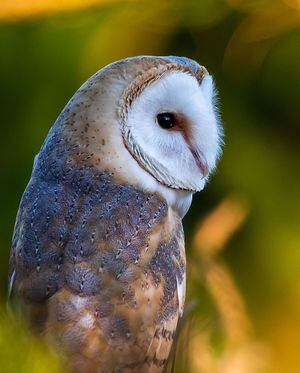Shortage of staple diet bad news for barn owl population
A REDUCED vole population has been blamed for the death of around half a dozen barn owls this year.

The birds hunt their main diet with super keen hearing and a head rotation of 250 degrees.
La Societe land management and conservation officer Jamie Hooper confirmed a higher number of dead barn owls than normal had been found.
‘We can’t put it down to bad weather because there hasn’t been sustained enough bad weather to affect them,’ he said.
‘The only thing we can think of is that their prey, voles in particular, are at a very low level this year and resulted in our owls really being in a bit of bother.’
He said in addition to the four owls he had come across himself, those found by other organisations and birdwatchers had brought the total to six.
During a usual year they would find only one or two dead owls who had not been able to survive the winter.
‘Vole populations are very variable and they do have widespread effects on owls and other birds of prey,’ added Mr Hooper.
‘We don’t know the factors for this because it’s very complex, but it can be related to the previous winter, the availability of food, plant material, grass and seeds – it’s just one of those things they both have to survive the lean years and recover in the good years.’
Voles make up about 45% of a barn owl’s diet, according to the Barn Owl Trust.
But it is not just that there may not be enough voles, younger owls will also struggle due to a lack of experience.
Mr Hooper, though, remained confident of the years to come.
‘We would expect a bad year would be followed, not necessarily straight away, but maybe in a couple of years’ time by a bumper year for voles and for the owls to fledge a good number of youngsters,’ he said.
‘This would hopefully mean the owl population will go back up to where it needs to be.’
In the meantime he suggested helping owls by giving them somewhere to stay with owl boxes, as well as ensuring that their prey has enough food to get their numbers up.
‘The best thing we can all do is set aside areas of our property where we let the grass grow or we sow pollinator patches that support the wildlife and small mammals,’ he said.
‘Allow more opportunity for wildlife to live in our gardens and to live in our fields.’





